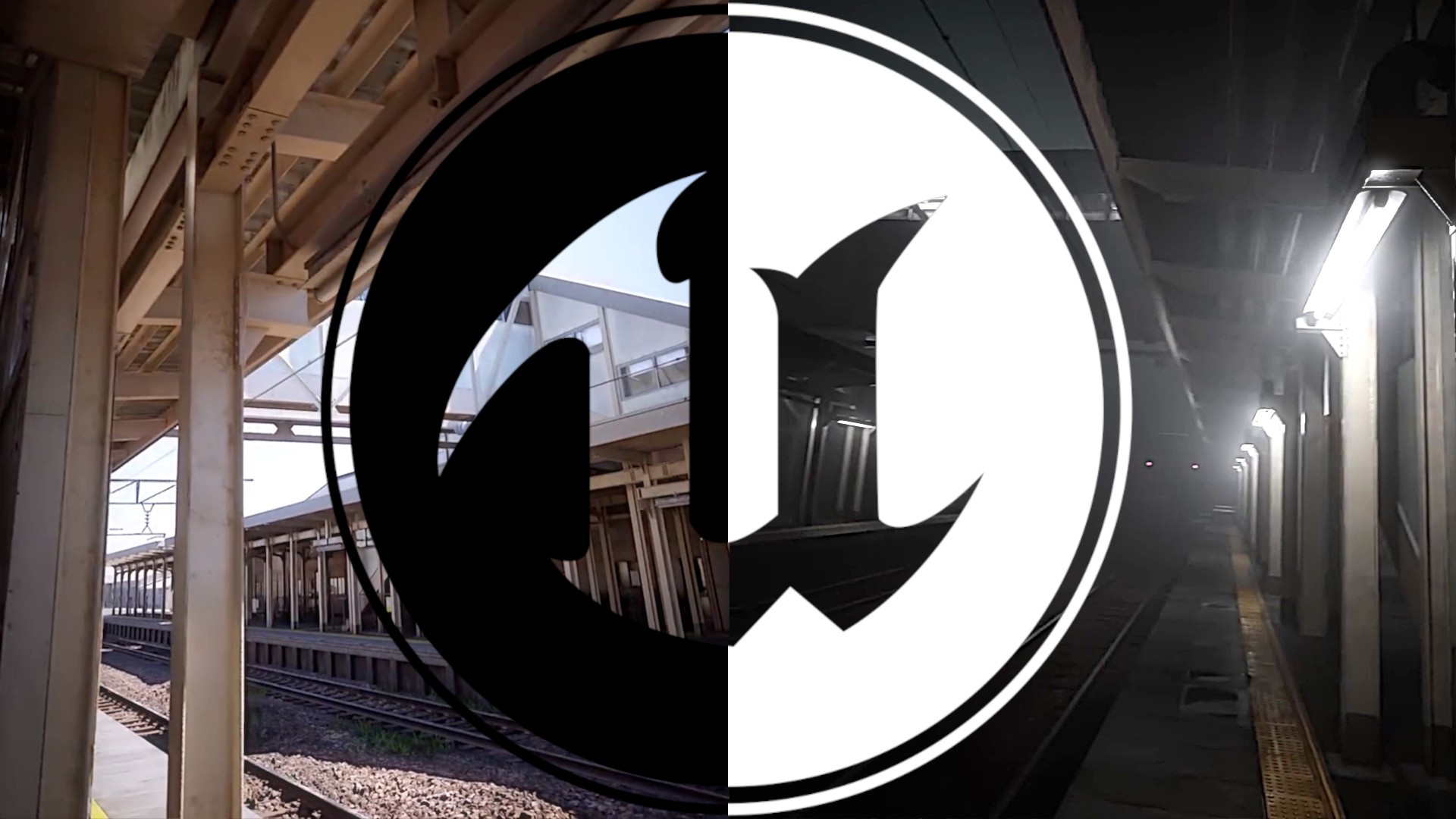link to YouTube content
You think you’re looking at the shaky camc order recording of a tourist waiting for his train at Japan’s Etchū-Daimon station – until the bright blue day suddenly gives way to dark night and the relaxed atmosphere degenerates into real goosebumps.
The video by 3D artist Lorenzo Drago not only looks “amazingly real for a video game”, no, it can hardly be distinguished from reality. If it weren’t for the revealing horror (no jumpscares) in the second half that made it such a viral hit on social media.
Since the release of Unreal Engine 5, surprisingly beautiful game scenes have been pouring in that would have been unthinkable just a few years ago. In terms of credibility, however, there is hardly a project that can hold a candle to the train station scene. How did Drago do that? Let’s find out!
Unreal Engine 5:
These 10 tech demos show you the graphics power of the new version
No nanites or photogrammetry
When it comes to displaying an environment with an extremely high level of detail, many developers rely on the revolutionary nanite technology of the new Unreal Engine. Thanks to it, even distant objects remain highly detailed without impacting performance. The same applies to scenes with a myriad of similar objects, such as rocks.
However, for his recreation of the train station in Toyama Prefecture, Drago was able to work with a manageable range of vision, did without the use of technology and instead chose the perspectives used very carefully.
Unreal Engine 5: A Japanese train station shows a new level of realism – Check out screenshots from Lorenzo Drago’s tech demonstration
The realistic textures would also suggest that these are photogrammetric scans made on site, meticulously capturing details such as the grain of the wood or traces of weathering.
But here, too, the artist grants in his Interview
In this informative video, colleague Dimi explains how and why this method is being used more and more frequently in games:
PLUS
7:31
Photogrammetry – How to make games photorealistic?
He himself was never there
What surprised Japanese, especially those familiar with the area, was that Lorenzo Drago had never visited this platform in his life and yet he was able to recreate it so lifelike. According to him, the fact that it doesn’t immediately look like a video game scene three key reasons.
On the one hand, the typical game graphic artefacts are hardly noticeable thanks to the high resolution, and on the other hand developers often take extensive liberties with the proportions in order to guide the player or emphasize interactive objects. On the other hand, he was able to concentrate entirely on credible proportions.

The camera movements would look so familiar because he recorded them using VR controls. The body movements transferred to the perspective in this way took place quite naturally and did not have to be “faked” first.
The fact that the station is so empty is probably due to time rather than technical reasons, because to populate it credibly would certainly have exceeded Drago’s time frame of about one month. Basically, the Unreal Engine 5 has no problems with whole masses of NPCs:
Unreal Engine 5:
Can now populate open worlds with thousands of NPCs
He originally chose the location after accidentally stumbling across it while looking for reference material. He was immediately fascinated by the atmosphere of a rural Japanese train platform and imitating it became an instructive challenge. The engine’s lumen lighting technology, which makes this level of realism much easier to achieve, was of crucial help.
How did you feel watching the video? Did you realize it was game graphics even before the drastic change in mood, or did you think it was deceptively real? Tell us your first impressions in the comments!












